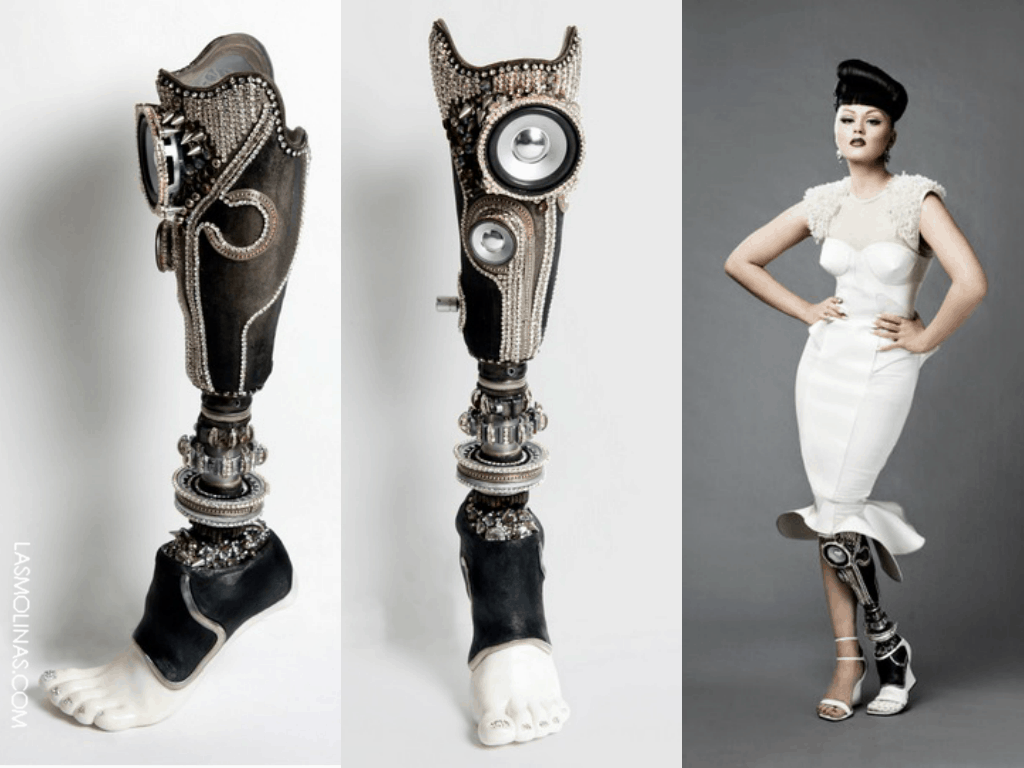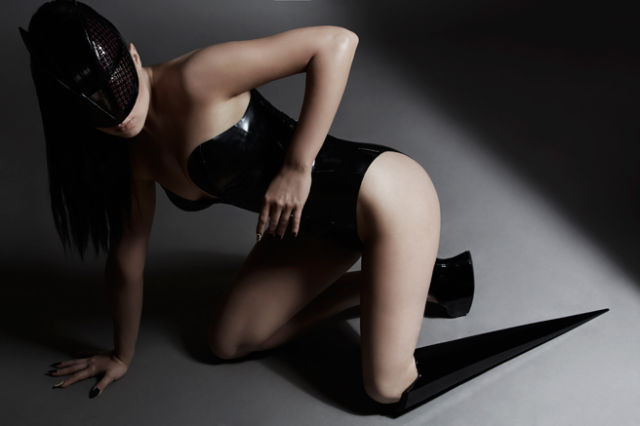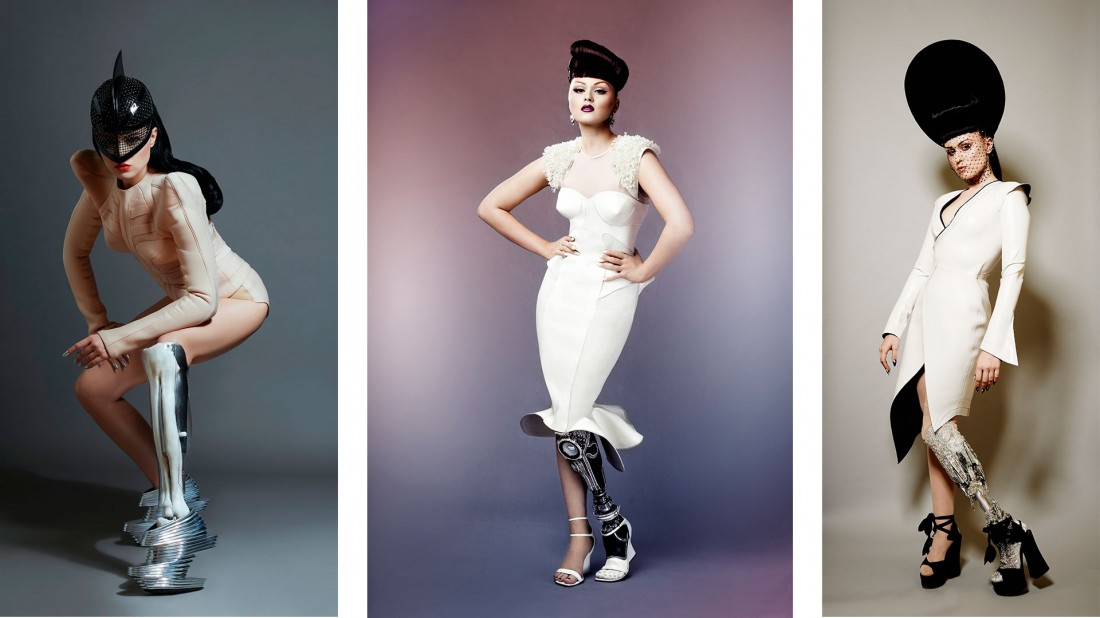VIKTORIA MODESTA
When Viktoria Modesta had her damaged leg amputated at the age of 20, it liberated her to pursue her musical ambitions. Now she’s hijacking the X Factor and getting millions of hits, she says disability is no barrier to stardom.
At the age of 15, Viktoria Modesta decided it was time to lose her lower left leg, but it took her another five years to convince a surgeon to do it. “Building an identity that I was more comfortable with, as opposed to the one that was given to me, was very important,” she says. She describes the surgery as a literal severing of the thing that was holding her back, as if it were a cord tethering her to the ground. It was, she says, eyes widening under the brim of her glossy black cap, “a new moment. I genuinely felt I had a life as a new person. I upgraded my opportunities, my comfort, my body. It was really empowering”.
Modesta is being championed by Channel 4 as the “world’s first amputee pop artist”. Her music video for her song Prototype – “I’m the model of the future,” she sings – which the channel funded and paid to air in an ad break during the X Factor final on Sunday, has received more than 10m views on the Channel 4 website, and another 1.5m on YouTube. For all that Modesta already looks like a pop star – she is beautiful, with delicate features, and radiates a serene confidence – the video, which carries the channel’s “Born Risky” tagline, celebrates her physical difference. She wears different prosthetics: one a sparkling diamante-covered leg, another a fierce, glossy spike that makes no attempt to resemble a human limb. Perhaps even more powerful – for those of us still unused to seeing images of disability, especially in pop culture – is one particularly sexy scene in which Modesta’s natural leg is on show, the lower part missing below the knee.
We certainly should be, says Modesta. The idea that people with a disability can’t be alluring, she says, is “totally unacceptable. I’m sure there are people who don’t feel that way, but there are definitely a lot of people who do. That’s why in the video I made every point of pushing my sexuality to the level that I’m comfortable with. It isn’t about being objectified and trying to please a male audience; it’s about representing a sexuality that I felt good about.”
Her prosthetics are made by the Alternative Limb Project, a company set up by Sophie de Oliveira Barata, who studied special-effects makeup before deciding to make prosthetics for amputees. At first, her aim was to make them as realistic-looking as possible. “After a while, I started thinking there might be other ways of addressing the space, rather than going for the obvious replacement. Why not turn it on its head and see the limb as a medium to express oneself?” she says.

The Video
“The reaction for her video all across the world has been incredible. I genuinely am just stunned that the things that seem so ordinary to me have made such an impact.”

The Stereo
Modesta’s emergence shouldn’t be anything out of the ordinary. The Paralympics, after all, were supposed to help society get better at understanding that people with disabilities are as capable of remarkable things as anyone else. And yet seeing her presented not as a challenge to the glamour of the entertainment world, but as an extension of it, still feels surprising.

Her prosthetics have included beautiful limbs that look as though they are made from porcelain and painted with flowers, through to futuristic-looking legs and ones fitted with speakers or lights. “There needs to be more variety, but it’s not even about the industry, it’s about the acceptance that needs to happen beyond that. People need to stop feeling freaked out, tabooed, offended, superior or inferior when they stand next to a person with a different body to themselves.”
Learn More
